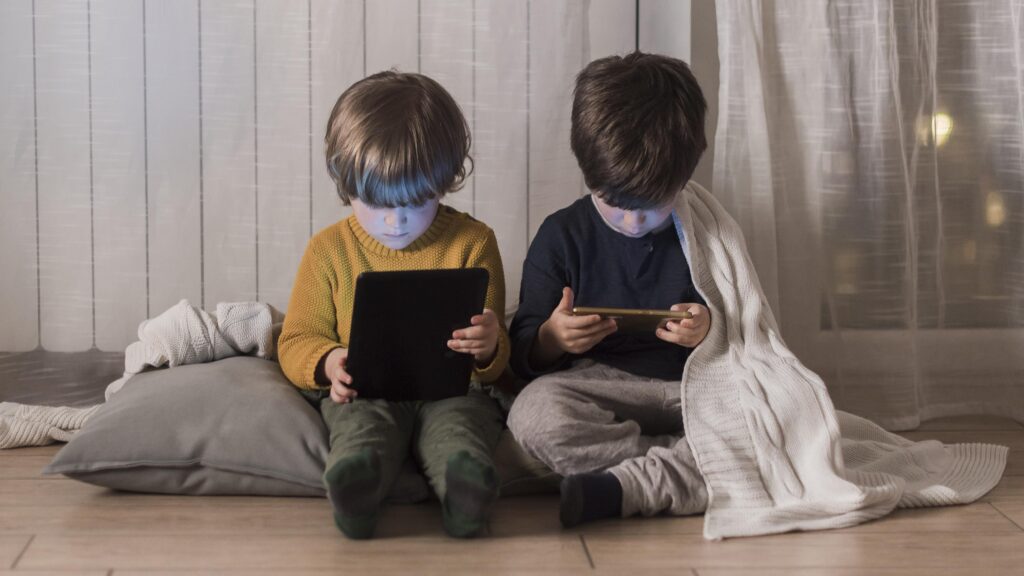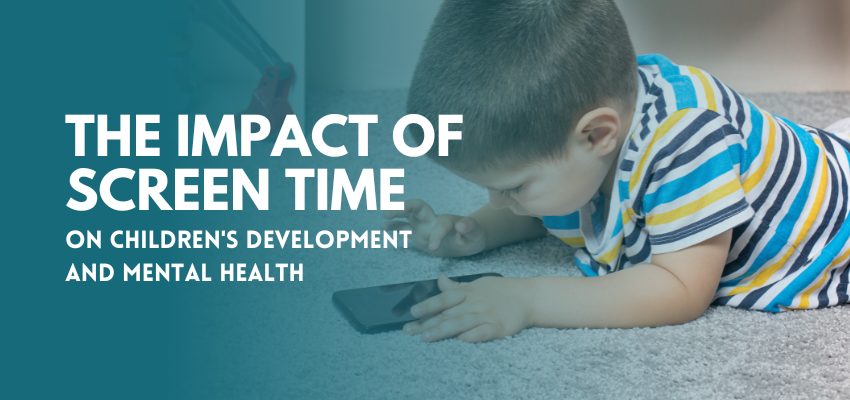In today’s digital age, screens are an integral part of daily life. Children are exposed to various screens, from televisions and computers to tablets and smartphones. While technology can offer educational benefits and connect children with peers, excessive screen time raises concerns regarding its effects on mental health. Understanding how these interactions manifest is crucial for parents and caregivers.

The Positive Aspects of Screen Time
Before delving into the potential negatives, it’s important to acknowledge the positive aspects of screen time for children:
- Educational Content: Many apps and programs are designed to promote learning, covering topics from math and science to reading and art.
- Social Connectivity: Social media and online games allow children to connect with friends, fostering a sense of community and belonging.
- Creative Expression: Digital platforms enable children to create art, music, and videos, encouraging their creative talents.
The Risks of Excessive Screen Time
Despite the benefits, there are significant risks associated with high amounts of screen time. A notable study examining the associations between screen time and diminished psychological well-being classified high users as those spending 7 or more hours daily, moderate users at approximately 4 hours, and low users at only 1 hour per day.
Here are some of the key concerns:
- Increased anxiety and depression: Research has indicated a correlation between increased screen time and symptoms of anxiety and depression in children.
Research suggests that excessive screen time is associated with various adverse mental health outcomes, including increased risks of anxiety, depression, and behavioral issues. - Sleep Disruption: The blue light emitted from screens can interfere with the body’s natural sleep-wake cycle, leading to sleep problems that are closely linked to mental health issues.
- Reduced Physical Activity: Engaging with screens often means less time spent on physical activities, contributing to physical health problems that can also affect mental well-being.
- Social Isolation: While screens can offer a sense of connection, excessive usage can lead to isolation from real-life interactions, reducing emotional support crucial for children’s development.

The Impact of Screen Time on Developmental Milestones
Excessive screen time could limit a child’s ability to notice and participate in essential daily activities required for exploring and understanding the world, fostering a form of “tunnel vision” that may hinder their overall development.
Different age groups experience the effects of screen time uniquely. Here’s how screen time can influence developmental stages:
- Early Childhood (Ages 0-5): During these formative years, excessive screen time can impede crucial developmental milestones such as language acquisition, social skills, and emotional regulation. Experts recommend limiting screen use and focusing on interactive screen time, such as educational shows or co-viewing with parents.
- Middle Childhood (Ages 6-12): As children begin school, screen time can become an integral part of their education. However, balancing educational screen time with other activities is vital to ensure that they also develop social skills and physical abilities.
- Adolescence (Ages 13-18): This period is often marked by increased screen usage due to social pressures and academic needs. While technology can help manage stress through social support, excessive use may lead to isolation, cyberbullying, and other mental health risks.

Strategies for Managing Screen Time
Given the complex relationship between screen time and mental health, it is essential for parents and caregivers to establish healthy habits. Here are some strategies:
- Set Limits: Establish clear guidelines around screen time usage, such as time restrictions and types of content. The American Academy of Pediatrics recommends that children aged 2-5 have no more than one hour of high-quality programming per day.
- Encourage Balance: Promote a balanced lifestyle by encouraging physical activities, outdoor play, and face-to-face interactions. This helps mitigate the potential negative effects of excessive screen time.
- Foster Open Communication: Engage in conversations with children about their online experiences. Discuss the content they consume, their online interactions, and encourage them to express their feelings about their digital lives.
- Model Healthy Behavior: Children often mimic the behaviors of adults. By demonstrating a balanced approach to screen usage, parents can guide their children towards healthier habits.
Conclusion
The relationship between screen time and children’s mental health is multifaceted and demands attention from parents, educators, and healthcare professionals. While screens can offer valuable opportunities for learning and connection, it is vital to remain mindful of the potential negative impact and risks associated with excessive use. By fostering a balanced approach to technology, we can help ensure that children’s mental health flourishes alongside their digital engagement.
